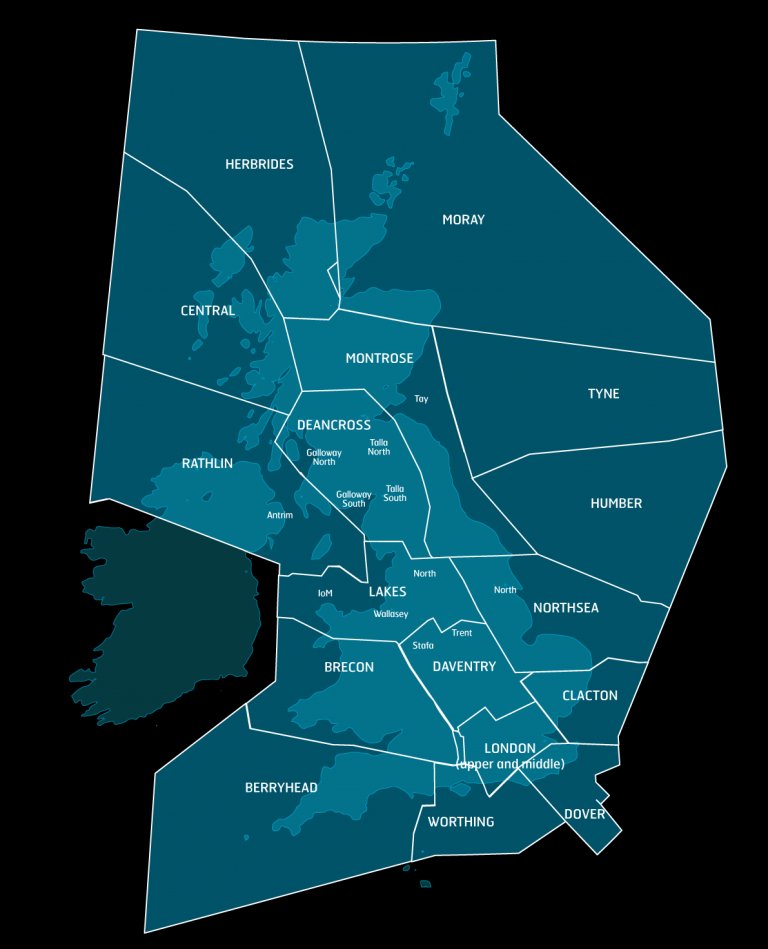United Kingdom Division
When talking about airspace, it is easy to forget about the different types of airspace that we have; not just classifications, but also the actual structure that is used. Very often, controlled airspace is divided into types or "sections", depending on the location (both geographical and altitude location) and the function it provides.
In the UK, we have a few noteworthy types of airspace;
- Aerodrome Traffic Zone (ATZ)
- Control Zone (CTZ)
- Control Area (CTA)
- Airways
- Upper Air Routes (UAR)
- Restricted Airspace
These are listed in a bottom-top order, with the exception of Restricted Airspace, which can be a part of any of the other types of airspace, at any location. As a controller, it is important to know the different types of airspace, as it allows you to increase your awareness. It's also good to know where the types of airspace are commonly found.
ATZ/CTZ: Aerodrome Control Zones afford protection to aircraft within the immediate vicinity of aerodromes.
CTA: Control Areas are situated above the Aerodrome Traffic Zone (ATZ) and afford protection over a larger area to a specified upper limit. Terminal Control Areas are normally established at the junction of airways in the vicinity of one or more major aerodromes.
Airways: Airways are corridors of airspace connecting the Control Areas and link up with airways in other countries too. Airways are normally 10 miles wide and have bases usually between 5,000 feet and 7,000 feet and they extend upward to a height of 24,500 feet.
Upper Air Routes (UAR): Upper air routes (UARs) sit above airways. Their vertical limits are usually FL 250 (25,000 feet) – FL 460 (46,000 feet). Civil and military aircraft operating above FL 245 (24,500 feet) are subject to a full and mandatory Air Traffic Control Service. All airspace above 24,500 feet is Class C controlled airspace.
Restricted Airspace: Sometimes reffered to as "Danger Zones," these areas prevent aircraft straying into dangerous places. Danger can come from airborne activities, such as military aircraft training or air-to-air refuelling. It can also come from the ground, such as from weapons testing ranges. To ensure efficient use of the airspace, most Restricted areas can be deactivated when they are not in use, allowing other aircraft to then use the airpsace.
In the UK, we have two Flight Information Regions (FIRs);
- London - EGTT, and
- Scottish - EGPX
The London FIR covers the English Channel, all the way to Newcastle. The Scottish FIR covers the whole of Scotland, as well as Northern Ireland and the Scottish Oceanic airspace.
This makes it easier to manage controllers and pilots, especially as they are controlled from two seperate locations (Swanwick and Prestwick).
Please Note: Shanwick Oceanic (EGGX) is controlled by the UK in the real-world, however POSCON is yet to simulate Oceanic control.
 Inside the FIRs themselves, we have different sectors that ATC use. These make it even easier to manage traffic, as it is broken down into smaller chunks, and resources can be placed where required. Altogether, the UK has more than 15 parent sectors, which also can be further broken down into sub-sectors.
Inside the FIRs themselves, we have different sectors that ATC use. These make it even easier to manage traffic, as it is broken down into smaller chunks, and resources can be placed where required. Altogether, the UK has more than 15 parent sectors, which also can be further broken down into sub-sectors.
POSCON UK does not simulate all of these sectors, as it is not necessary to break down the traffic to such a high level as it is in the real-world. However, many of our sectors will still have similair names, such as Daventry, Worthing, Lakes and Deancross.
Air Traffic Controllers (ATCOs) and Flight Information Services Officers (FISOs) are allocated to Sectors to advise and guide the aircraft flying in them. The number, type and skills of those allocated to a Sector will vary depending on the nature of airspace it covers.
Airspace Sectors can be created and reduced dynamically to deal with demand. For example, in times when there are high levels of air traffic, more sectors may be opened with more Controllers allocated to manage the aircraft within an area of airspace. This is done to maintain safety as a Controller can only manage a certain number of aircraft at one time.
On POSCON, sectors will often be grouped together, or "band-boxed" to reach as many pilots as reasonably possible.

